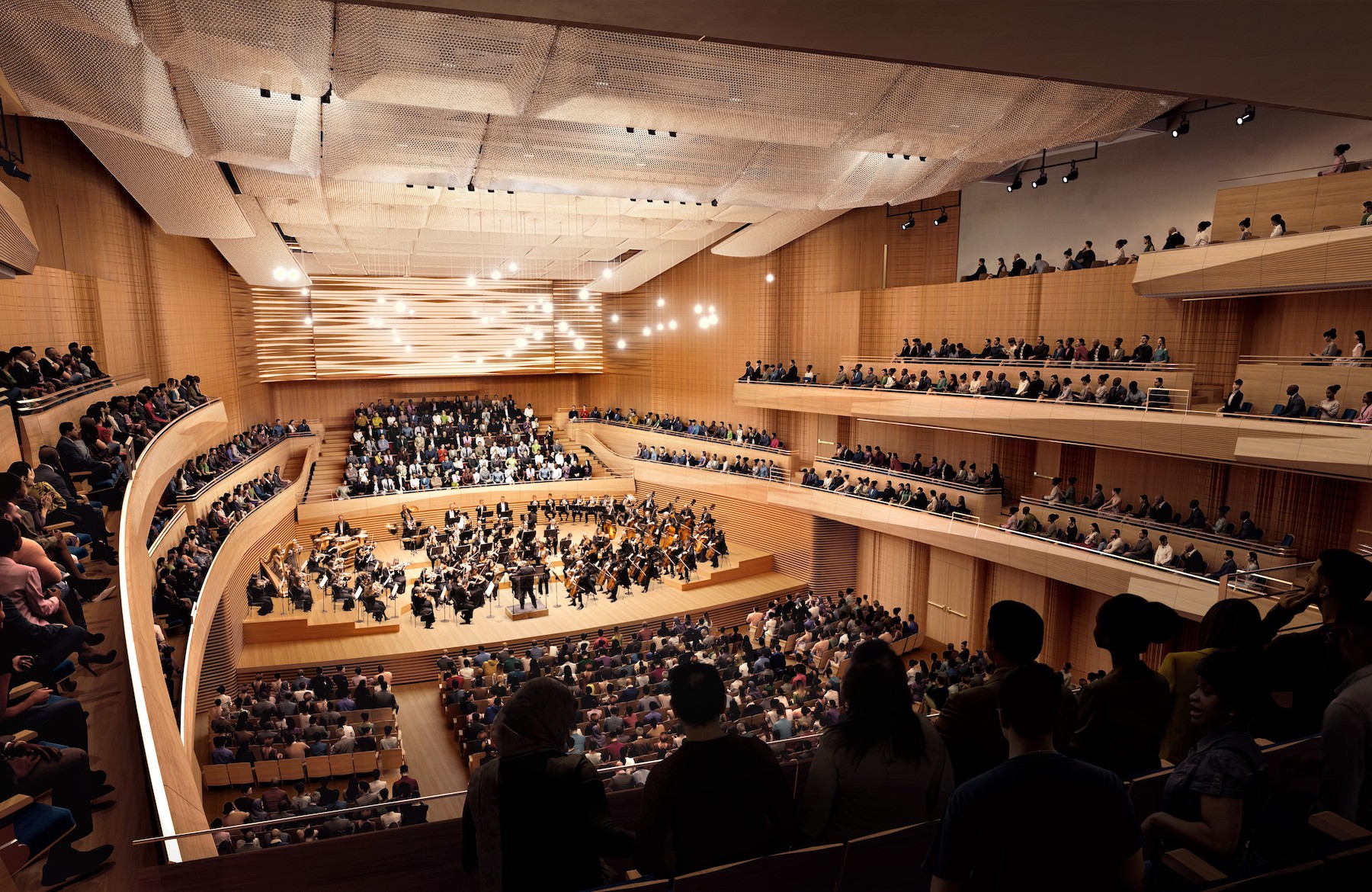David Geffen Hall, the acoustically challenged home to the New York Philharmonic at Lincoln Center for the Performing Arts in New York City, will reopen in October, 18 months ahead of schedule, as a “reimagined” performance space following its $550 million reconstruction and renovation.
On Wednesday, Lincoln Center made official the hall’s reopening plans at a press conference whose attendees included New York Governor Kathy Hochul and New York City Mayor Eric Adams, the latter of whom compared this project—which was completed during a coronavirus pandemic that shut down many businesses and activities in the city, including Lincoln Center—to the construction of the Empire State Building in one year and 24 days during the Great Depression of the 1930s.
Adams also made the connection between tourism that he hopes this refurbished hall will attract and his administration’s commitment to public safety at a time when violent crimes in New York City have risen alarmingly.
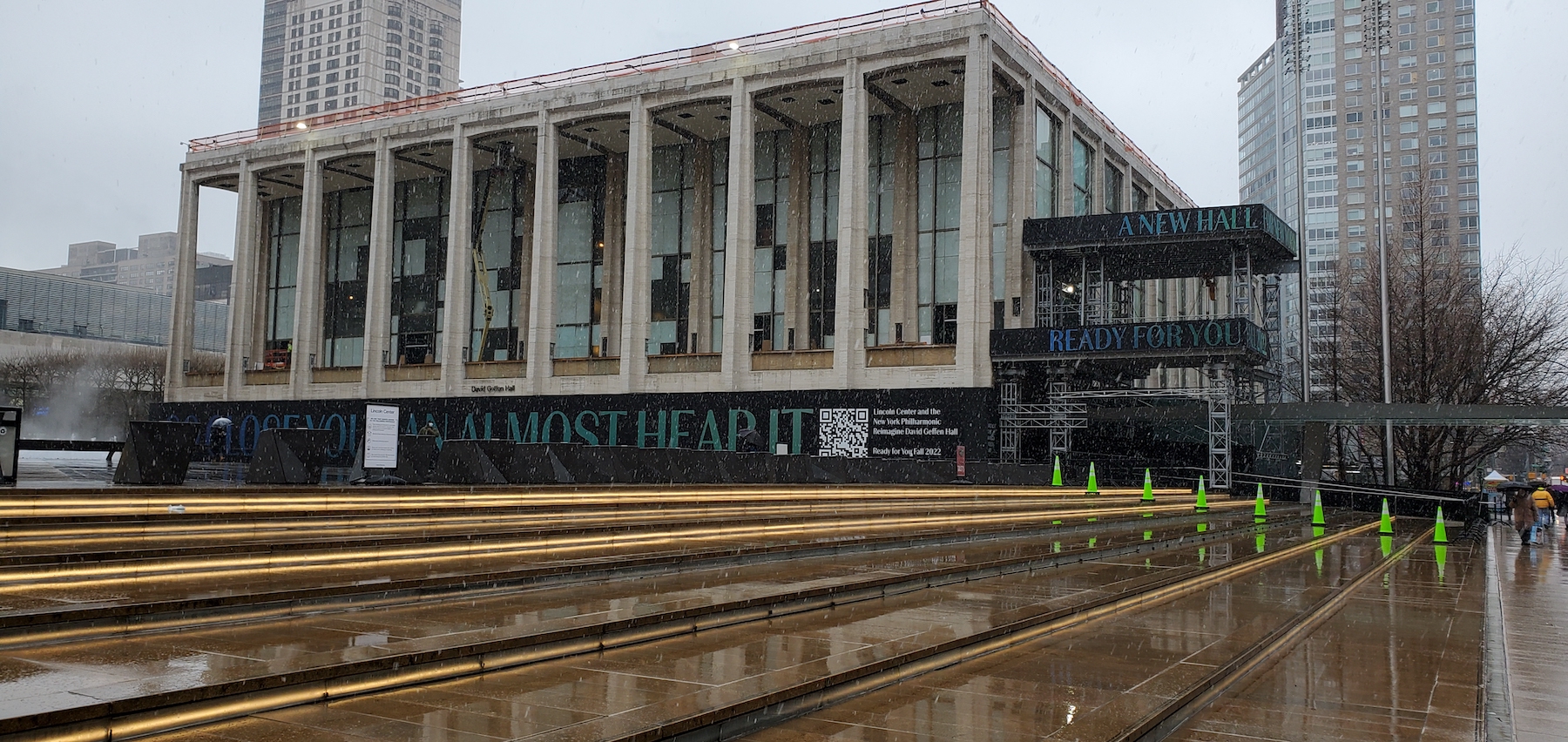
In the press conference’s audience was a cohort of construction workers for this project that included Milton Angeles, a civil engineer for Turner Construction, the project’s construction manager. During his brief speech, Angeles recalled being out of work before he was hired for his current position. This reconstruction created 3,000 construction job and 6,000 in total, and was expected to generate more than $600 million in economic activity through the reopening.
Other design and building team members include Thornton Tomasetti and Kohler Ronan (engineering), Diamond Schmitt Architects (architectural design), Akustiks (acoustics), Fisher Dachs (theater design), and Tod Williams Billie Tsien Architects (public space design, including a lobby that will double the size of its predecessor space).
The vast majority of this project’s cost—which was fully funded as of yesterday—was raised from private donor sources.
A SOUND INVESTMENT
At least since April 2021, Lincoln Center has been saying that David Geffen Hall would reopen in the fall of 2022, well ahead of its initial 2024 opening target. The pandemic, in fact, allowed for an accelerated reconstruction schedule after the Philharmonic stopped performing at Geffen and temporarily shuttled between Alice Tully Hall and Rose Theater at Jazz, two other performance spaces on Lincoln Center’s campus.
The New York Times reported yesterday that the pandemic cost the Philharmonic more than $27 million in ticket revenue.
Since opening in 1962, first under the name Philharmonic Hall and then as Avery Fisher Hall, the building had been plagued by complaints about the inferior quality of its acoustics and its design aesthetics (the hall was, essentially, a mammoth square box). In 2015, the record and movie producer David Geffen contributed $100 million for renovations and naming rights, and that ante kickstarted the fundraising campaign to reconstruct the hall.
“This is not just a renovation,” asserted Gary McCluskie, a principal architect with Diamond Schmitt, who spoke with BD+C yesterday.
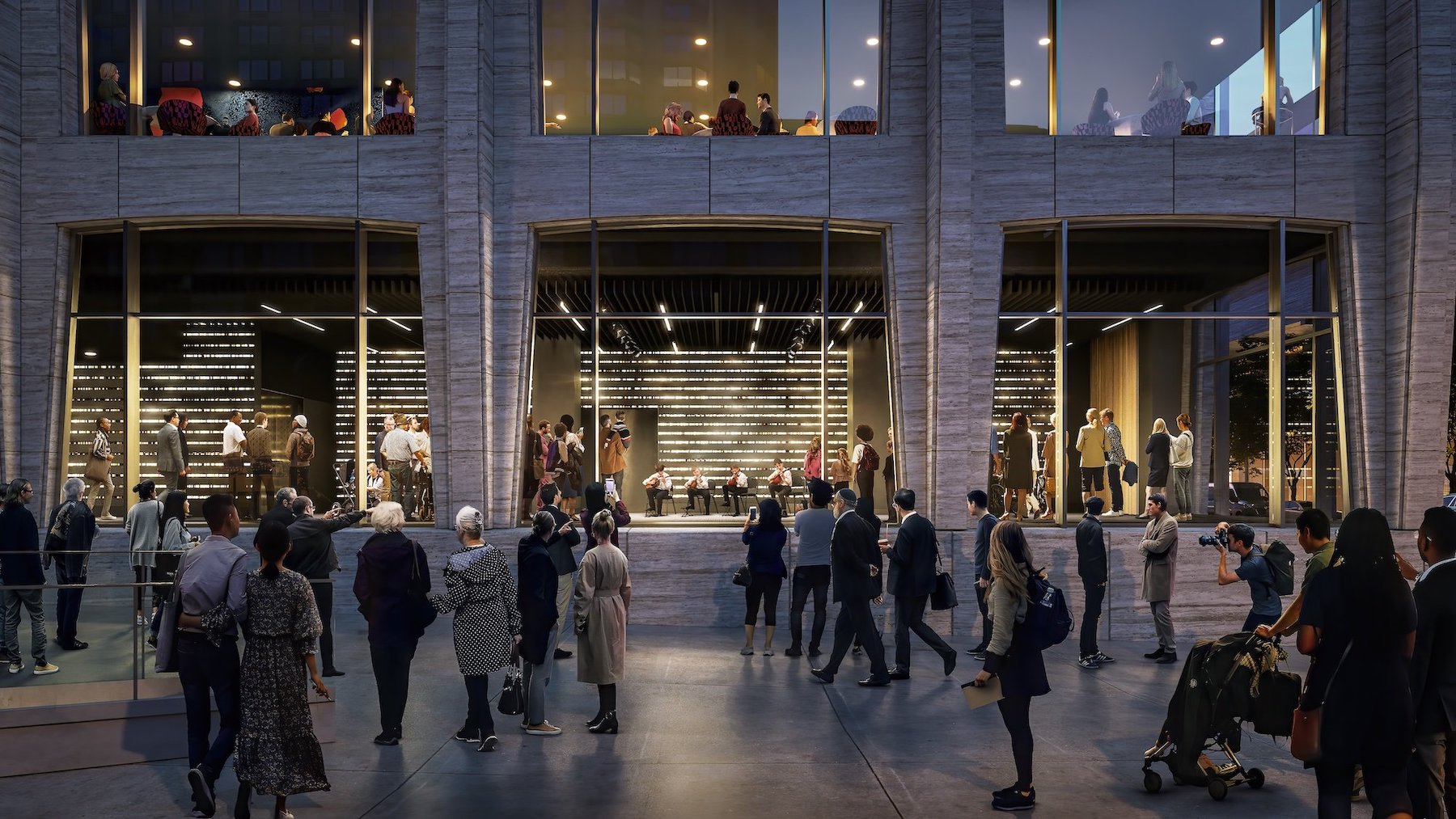
FEWER SEATS, MORE TRANSPARENCY
Key changes to improve the hall’s acoustics and sight lines, he explained, include eliminating its proscenium, moving the stage 24 ft forward, and positioning the stage so that the audience seating wraps around it. The design team reduced the seating to 2,200, from 2,738, reconstructed the side tiers, and replaced what had been plaster walls with 2- to 4-inch-thick beech wood cladding that is attached to concrete.
“Acoustics is all about balance,” said Paul Scarbrough, a Principal with Akustiks. “The audience absorbs sound, so with fewer people there’s less absorption.” He and McCluskie also pointed out that the hall—including motorized plastic reflectors in the ceiling, its lighting, the stage itself, and its sound—can be reconfigured for different types of performance events. (Scarbrough noted that amplified versus orchestral music requires different acoustical considerations.)
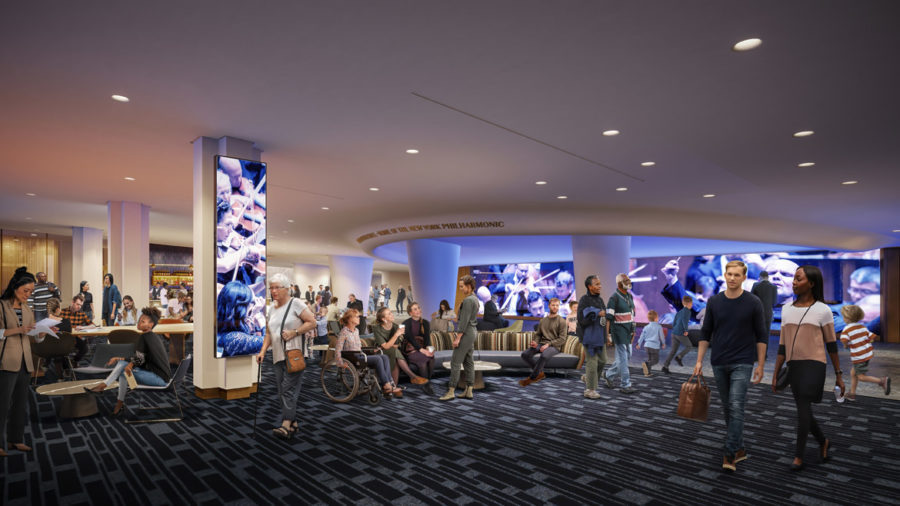
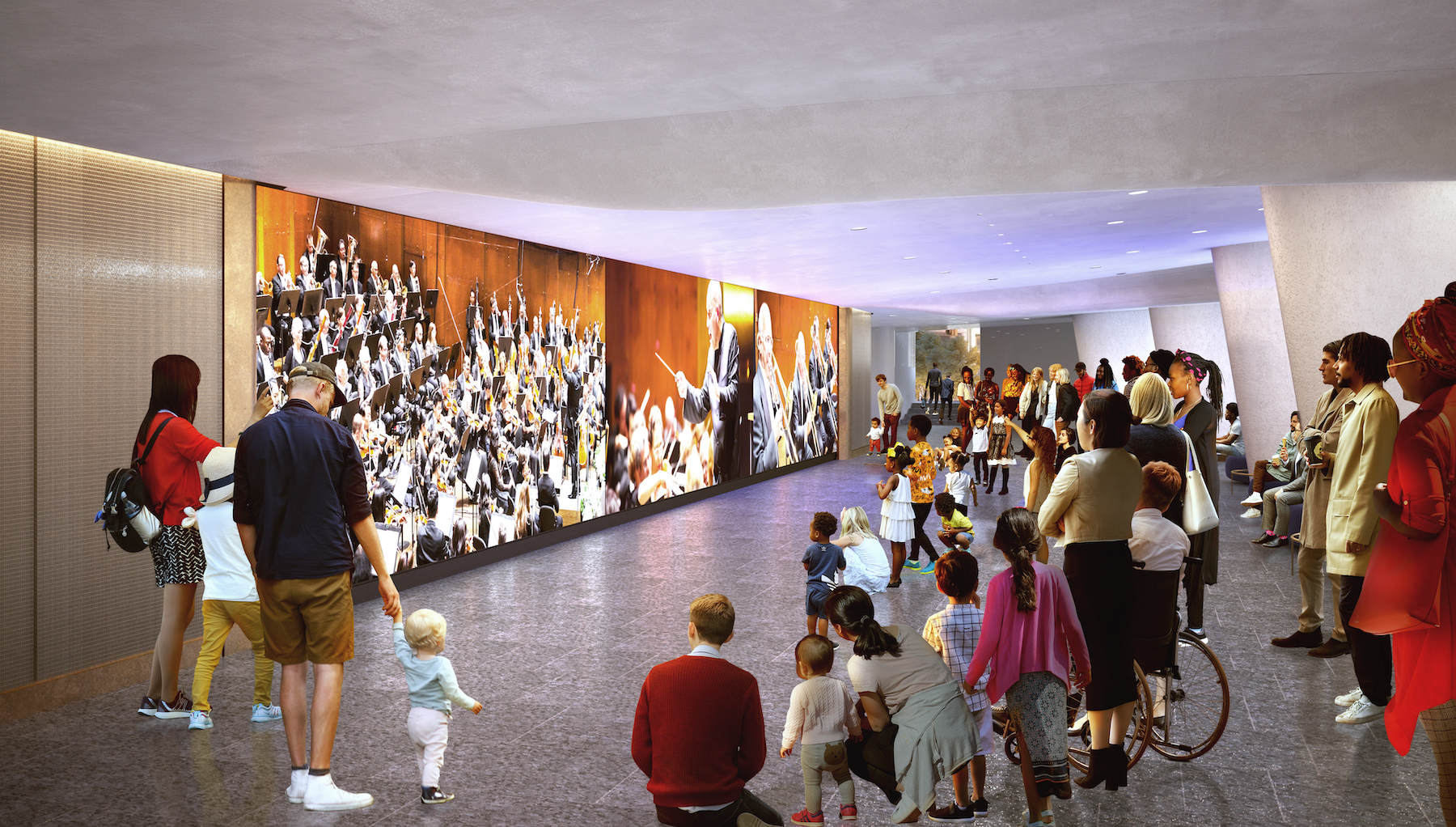
“We redefined every material we used to capture the energy of the performances,” said McCluskie. He added that those materials and fabrics are being carried over into the hall’s public spaces that include a Welcome Center, a Grand Promenade that Lincoln Center claims will create one of the largest gathering spaces for a performance facility in the city, and the addition of The Sidewalk Studio, a ground-floor home for educational, artistic and community activities with floor-to-ceiling windows for spectators to watch.
The hall’s expanded lobby will feature a 50-ft-long media streaming wall that displays concerts and events in real time.
The building will offer 11,000 sf of office space, and its north façade will serve as a billboard for site-specific works. It will also include a restaurant, patrons lounge and other amenities.
This summer, the Philharmonic plans to release its upcoming schedule of performances at David Geffen Hall.
Related Stories
| Aug 11, 2010
Portland Cement Association offers blast resistant design guide for reinforced concrete structures
Developed for designers and engineers, "Blast Resistant Design Guide for Reinforced Concrete Structures" provides a practical treatment of the design of cast-in-place reinforced concrete structures to resist the effects of blast loads. It explains the principles of blast-resistant design, and how to determine the kind and degree of resistance a structure needs as well as how to specify the required materials and details.
| Aug 11, 2010
Jacobs, CH2M Hill, AECOM top BD+C's ranking of the 75 largest federal government design firms
A ranking of the Top 75 Federal Government Design Firms based on Building Design+Construction's 2009 Giants 300 survey. For more Giants 300 rankings, visit http://www.BDCnetwork.com/Giants
| Aug 11, 2010
Manhattan's Pier 57 to be transformed into cultural center, small business incubator, and public park as part of $210 million redevelopment plan
LOT-EK, Beyer Blinder Belle, and West 8 have been selected as the design team for Hudson River Park’s Pier 57 at 15th Street and the Hudson River as part of the development group led by New York-based real estate developer YoungWoo & Associates. The 375,000 square foot vacant, former passenger ship terminal will be transformed into a cultural center, small business incubator, and public park, including a rooftop venue for the Tribeca Film Festival.
| Aug 11, 2010
Gensler, HOK, HDR among the nation's leading reconstruction design firms, according to BD+C's Giants 300 report
A ranking of the Top 100 Reconstruction Design Firms based on Building Design+Construction's 2009 Giants 300 survey. For more Giants 300 rankings, visit http://www.BDCnetwork.com/Giants
| Aug 11, 2010
Bowdoin College Museum of Art
Brunswick, Maine
Since its founding in 1794, when what is now the state of Maine was still part of the Commonwealth of Massachusetts, Bowdoin College has played a pivotal role in the educational and cultural life of Maine. Contributing to that role for more than a century has been the Walker Art Building, an 1894 McKim, Mead & White-designed structure and home to the college’s Museum of Art.
| Aug 11, 2010
Gensler among eight teams named finalists in 'classroom of the future' design competition
Eight teams were recognized today as finalists of the 2009 Open Architecture Challenge: Classroom. Finalists submitted designs ranging from an outdoor classroom for children in inner-city Chicago, learning spaces for the children of salt pan workers in India, safe spaces for youth in Bogota, Colombia and a bamboo classroom in the Himalayan mountains.
| Aug 11, 2010
ASHRAE introduces building energy label prototype
Most of us know the fuel efficiency of our cars, but what about our buildings? ASHRAE is working to change that, moving one step closer today to introducing its building energy labeling program with release of a prototype label at its 2009 Annual Conference in Louisville, Ky.
| Aug 11, 2010
Thom Mayne unveils 'floating cube' design for the Perot Museum of Nature and Science in Dallas
Calling it a “living educational tool featuring architecture inspired by nature and science,” Pritzker Prize Laureate Thom Mayne and leaders from the Museum of Nature & Science unveiled the schematic designs and building model for the Perot Museum of Nature & Science at Victory Park. Groundbreaking on the approximately $185 million project will be held later this fall, and the Museum is expected to open by early 2013.
| Aug 11, 2010
Theater Renovation—A First-Class Production
In 1985, the city of San Diego ordered the historic Balboa Theatre, its beleaguered performing arts center, to be shuttered due to seismic safety concerns. It would take another two decades to restore the landmark building.


